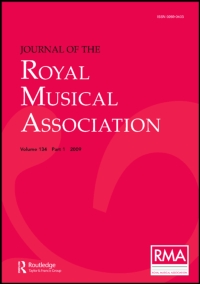No CrossRef data available.
Article contents
Organ Accompaniments in England in the Sixteenth and Seventeenth Centuries
Published online by Cambridge University Press: 01 January 2020
Extract
A few preliminary observations are desirable respecting organs and organ music of the centuries prior to the sixteenth.
In the thirteenth century both the Greek and Latin clergy deemed the use of organs in churches profane, and it is matter of common knowledge that the organ remains excluded from the Greek Church to this day.
- Type
- Research Article
- Information
- Copyright
- Copyright © Royal Musical Association, 1899
References
∗ Seidel, “Die Orgel und ihr Bau.” Breslau, 1842.Google Scholar
∗ The organ part in very scarce, and is not to be found in the British Museum.Google Scholar
† The Chester book contains compositions by John Hutchinson, organist of York in 1633; Orlando Gibbons; Patrick of Westminster; Gyles of Windsor, 1595: Peter Stringer (autograph), organist of Chester, 1661; Tallis; Thomas Tomkins; Albert Bryne, organist of St. Paul's, 1638; William Ottey; Michael Wise; Byrd; Eduard Tucker; Captain Cooke; and Thomas Fenell of Dublin, 1689.Google Scholar
‡ These books I have purchased from time to time, and cannot but express regret that they have not been preserved in the libraries of the churches to which they originally belonged.Google Scholar
∗ The names are spelt as in the MS.Google Scholar
∗ Add. MS. 29,996, Btit. Mus.Google Scholar
∗ There is a previous entry in the diary on the 4th April. “To Hackney, where good neat's tongue, and things to eat and drink, and very merry, the weather being mighty pleasant; and here I was told at their church they have a fair pair of organs, which play while the people sing, which I am mighty glad of, wishing the like at our church at London, and would give £50 towards it.”.Google Scholar
† The organ which had been erected in Hackney Church in 1622 had disappeared during the Civil War. A new one was put up in 1666 by a Mr. Roe. The organist was Thomas White; his salary, twenty-eight shillings a month.Google Scholar
∗ See also the “Sammelbände” of the Internationale Musikgesellschaft, pp. 420–29.Google Scholar


